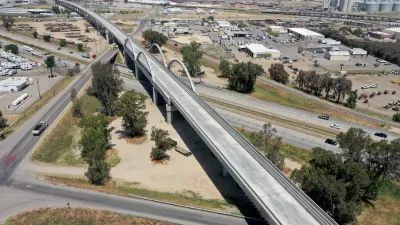California's high-speed rail project is a triumph for rail advocates, but made possible by private sector funding. A Canadian rail project must also follow the model of public-private partnerships.
"If we want to drag Canadian passenger rail service out of the 1960s, Ottawa must include private partners, a development that could mean selling the moribund Via Rail to a transportation consortium that understands the technology, the market opportunities and is willing to invest.
High-speed rail...is tailor-made for public-private partnerships. Such train networks are extremely capital intensive and therefore depend on public financing to get going. But as a transportation service that competes vigorously with airlines, private operators will bring the necessary marketing savvy, as well as the ability of amortizing capital costs over a long period.
If the recent developments in California do herald the beginning of a new era for 21st century rail in the U.S., Canada desperately needs to insert itself into that conversation, making the case for cross-border service connections and international joint ventures involving private investors."
FULL STORY: Putting fast rail back on track

Manufactured Crisis: Losing the Nation’s Largest Source of Unsubsidized Affordable Housing
Manufactured housing communities have long been an affordable housing option for millions of people living in the U.S., but that affordability is disappearing rapidly. How did we get here?

Americans May Be Stuck — But Why?
Americans are moving a lot less than they once did, and that is a problem. While Yoni Applebaum, in his highly-publicized article Stuck, gets the reasons badly wrong, it's still important to ask: why are we moving so much less than before?

Research Shows More Roads = More Driving
A national study shows, once again, that increasing road supply induces additional vehicle travel, particularly over the long run.

Judge Halts Enforcement of Anti-Homeless Laws in Grants Pass
The Oregon city will be barred from enforcing two ordinances that prosecute unhoused residents until it increases capacity and accessibility at designated camping sites.

Advancing Sustainability in Los Angeles County Schools
The Los Angeles County Office of Education’s Green Schools Symposium brings together educators, students, and experts to advance sustainability in schools through innovative design, climate resilience strategies, and collaborative learning.

Using Old Oil and Gas Wells for Green Energy Storage
Penn State researchers have found that repurposing abandoned oil and gas wells for geothermal-assisted compressed-air energy storage can boost efficiency, reduce environmental risks, and support clean energy and job transitions.
Urban Design for Planners 1: Software Tools
This six-course series explores essential urban design concepts using open source software and equips planners with the tools they need to participate fully in the urban design process.
Planning for Universal Design
Learn the tools for implementing Universal Design in planning regulations.
City of Moreno Valley
Institute for Housing and Urban Development Studies (IHS)
City of Grandview
Harvard GSD Executive Education
NYU Wagner Graduate School of Public Service
City of Cambridge, Maryland
Newport County Development Council: Connect Greater Newport





























